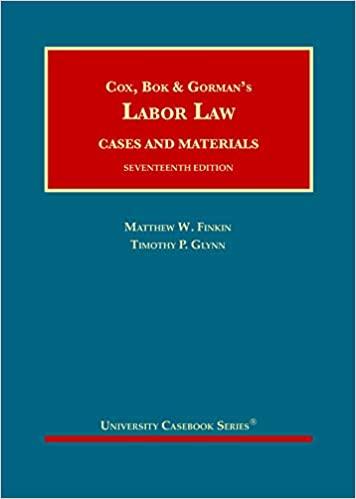Answered step by step
Verified Expert Solution
Question
1 Approved Answer
Read both passages and answer question Question: How would you describe the differences between the two accounts? Use examples from both sources to highlight &
Read both passages and answer question Question: How would you describe the differences between the two accounts? Use examples from both sources to highlight & explain the differences. Source 1: On the thirty-third day after I departed, I came to the Indian sea, where I found many islands 3inhabited by men...all which I took possession for our most fortunate king (King Ferdinand)... All these people lack, as I said above, every kind of iron; they are also without weapons, which indeed are unknown; nor are they competent to use them, not on account of deformity of body, for they are well formed, but because they are timid and full of fear... when I sent two or three of my men to some of the villages, that they might speak with the natives, and as soon as they saw our men approaching, they would quickly take flight. And this was not because any hurt or injury had been inflicted on any one of them, for to everyone whom I visited and with whom I was able to converse, I distributed whatever I had, cloth and many other things, no return being made to me...They show greater love for all others than for themselves; they give valuable things... being satisfied even with a very small return, or with nothing; however, I forbade that things so small and of no value should be given to them, such as pieces of plates, dishes, and glass, likewise keys and shoelace tips although if they were to obtain these, it seemed to them like getting the most beautiful jewels in the world. It happened, indeed, that a certain sailor obtained in exchange for a shoelace tips as much worth of gold as would equal three golden coins; and likewise other things for articles of very little value, especially for new silver coins, and for some gold coins, to obtain which they gave whatever the seller desired, as for instance an ounce and a half and two ounces of gold, or thirty and forty pounds of cotton, with which they were already acquainted. They also traded cotton and gold for pieces of bows, bottles, jugs and jars, like persons without reason, which I forbade because it was very wrong; and I gave to them many beautiful and pleasing things that I had brought with me, no value being taken in exchange......They firmly believe that all strength and power, and in fact all good things are in heaven, and that I had come down from thence with these ships and sailors; and in this belief I was received there after they had put aside fear. ..... They are coming with me now, yet always believing that I Source 2: Columbus ran his flagship, the Santa Maria, aground on the island of Haiti on Christmas Eve in 1492. The Arawak people helped rescue Columbus and his men and helped salvage the shipwrecked Santa Maria. The Arawak people helped Columbus dismantle the wrecked flagship and erect a fort with the salvaged timbers. When Columbus left Haiti he rewarded the Arawak(Taino) people by kidnaping 25 of them, and selling the seven or eight survivors of the return voyage to Spain, into slavery. On Columbus's second voyage, he returned with 17 heavily armed ships 1500 men, cannon, guns, crossbows, and attack dogs. All of which he used to fulfill his wishes of conquest of these Children of God. After his attempts of conquest and enslavement were met with resistance his descriptions of these people became less complementary. The Native people were forced to pay a stipend to the Spanish. This stipend consisted of food, gold, cotton.... Failure to produce tribute to the Spanish brought swift and terrible punishment. Those that did not comply were given an attitude adjustment that consisted of violent removal of their nose, ear, hand or foot. Those that actively resisted were burned alive. The Native people were even forced to carry the Spanish, to spare the Spanish the drudgery of walking. So great were the cruelties and horrible the degradations that the Native people suffered at the hands of Columbus and his men, that entire villages would bolt in panic at the sight of a single Spaniard. The whole populations of some villages would, upon the approach of Spanish soldiers, hurl themselves from cliffs, hang themselves, shoot one another with arrows, or take poison to avoid life under the boot of Spanish oppression. Others abandoned their cultivated fields and homes to hide in the forested hills where many thousands starved to death... After the surrounding Islands of the Caribbean were likewise depopulated, the African slave trade began to replace the now all but extinct Native people. Estimates of the Native population of Haiti in 1492 range up to 8 million people. In 1496, according to the results of a Spanish census, the Native populace had dropped to approximately 3 million. By 1516 only 12,000 remained. In 1542, 200 remained alive. By 1555, nearly all 8 million were gone
Step by Step Solution
There are 3 Steps involved in it
Step: 1

Get Instant Access to Expert-Tailored Solutions
See step-by-step solutions with expert insights and AI powered tools for academic success
Step: 2

Step: 3

Ace Your Homework with AI
Get the answers you need in no time with our AI-driven, step-by-step assistance
Get Started


